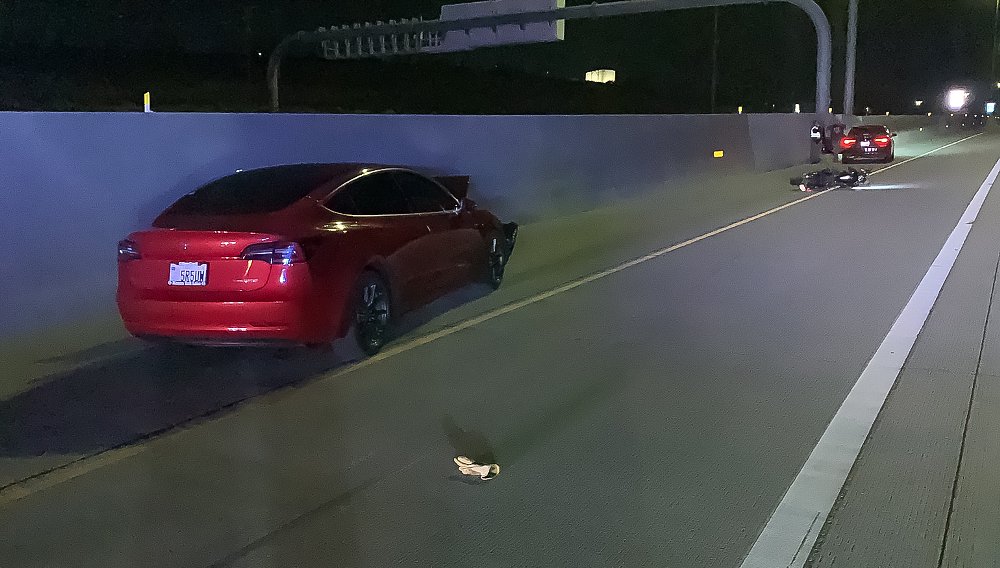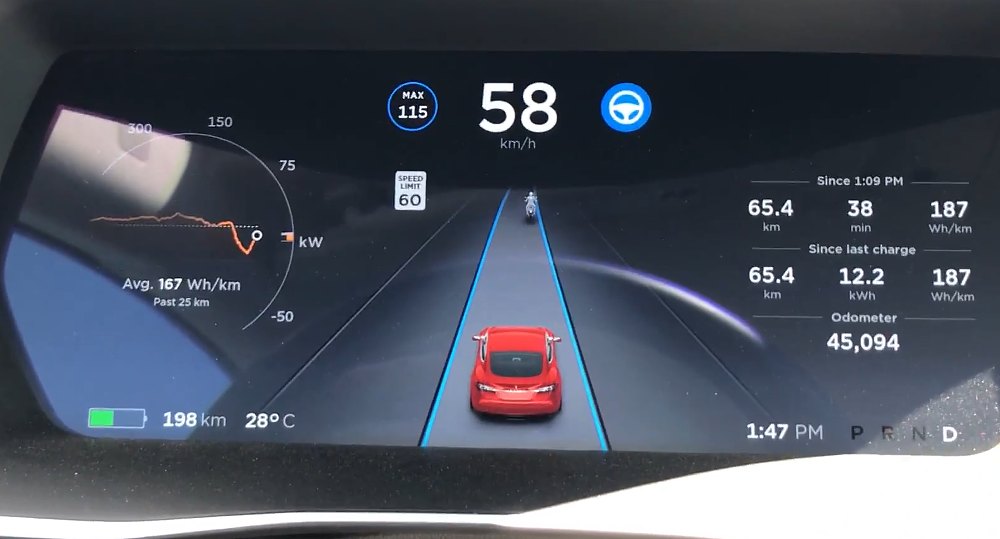Motorcycle organizations on both sides of the Atlantic are focusing on the need to make advanced driver assistance systems (ADAS) in cars more capable of detecting motorcycles and other vulnerable road users. The growing perception is that safety systems in cars that have the potential to make motorcyclists safer are actually having the opposite effect at the moment.
In Europe, the motorcycle manufacturers association, ACEM, highlighted a paper by the Connected Motorcycle Consortium (CMC) that gathered a range of research about cars' abilities to detect motorcycles, most of which was not very reassuring for those of us who share the road with drivers who are outsourcing more of their driving responsibilities to partially automated systems. In the United States, the Motorcycle Industry Council (MIC) has also expressed concerns and the dangers of "unproven vehicle automation technology" has become the top issue for the American Motorcyclist Association's (AMA) Washington office, said Director of Government Relations Michael Sayre.
New attention was drawn to the issue when two motorcyclists, one in California and one in Utah, were killed when they were hit from behind by Tesla cars operating on Tesla's Autopilot system.
The CMC, which brings together motorcycle manufacturers, suppliers, researchers, and others, issued a white paper summing up multiple studies about conspicuity of powered two-wheelers. While much of the research cited is a few years old and preliminary in nature, based on limited testing and small sample sizes, it is not generally encouraging.
The most in-depth European study of motorcycle crashes, the Motorcycle Accident In-Depth Study (MAIDS), found that in 72% of crashes involving a motorcycle and another vehicle there was a "perception failure" by the driver of the other vehicle. The CMC is concerned that this will only get worse as drivers rely more on ADAS and are even less attentive. Unfortunately, the safety systems aren't necessarily better at seeing motorcycles than the humans.
One example: In a test to see if cars with forward collision warning systems would detect a motorcycle stopped in the car's path, the cars passed in only 32% of the tests, compared to 95% when the vehicle ahead was a stopped car.
Another test of multiple cars with adaptive cruise control found that the cars were often not only later to detect a slower motorcycle ahead, but were also less likely to detect it if the motorcycle was not in the center of the lane. Consider that motorcyclists typically ride in the left or right wheel track of the lane, rather than the center, where there is more likely to be fluids or debris, and you can see how long-standing safety practices are being scrambled by the fact that we're sharing the road with automated systems.
Here in the United States, the AMA's Sayre says he found references to this issue in the organization's American Motorcyclist magazine dating back to 1999. The issue has only taken on more urgency in recent years as systems on cars have advanced and are being "tested" by consumers on the roads with little oversight or standardization.
"Motorcyclists have long been told by crash-causing inattentive drivers, 'Sorry, I didn't see you.' Now we are hearing, 'Sorry, my car didn't see you,'" said Sayre. "This is unacceptable and must be fixed."
Unfortunately, it hasn't been fixed, despite the AMA's lobbying of members of Congress and meetings with current Secretary of Transportation Pete Buttigieg, as well as his predecessor in the previous administration. While the European New Car Assessment Program (NCAP) has been updated for 2023 to include the ability of ADAS to detect motorcycles, the latest update in the United States did not include that element.
If car drivers were paying attention and were backed by ADAS that reliably detected motorcycles, then riding on the public roads would be getting safer. Instead, there's evidence that the opposite is happening.
"This is perhaps the most frustrating part of this issue," said Sayre. "There is an incredible potential to save motorcyclists from inattentive drivers with this technology but a lack of action by the automotive industry, federal regulators, and Congress has allowed this technology to put motorcyclists at risk while giving drivers a false sense of security, enabling drivers to pay even less attention to the task at hand."
Longer term, connectivity may provide the answer as cars won't have to "see" motorcycles but will be contacted by them through connectivity solutions. Meanwhile, in Europe, the CMC is calling for standardized tests involving cars and motorcycles to ensure that the systems being deployed on cars recognize smaller objects. It appears progress in the United States is likely to come even more slowly than in Europe.










